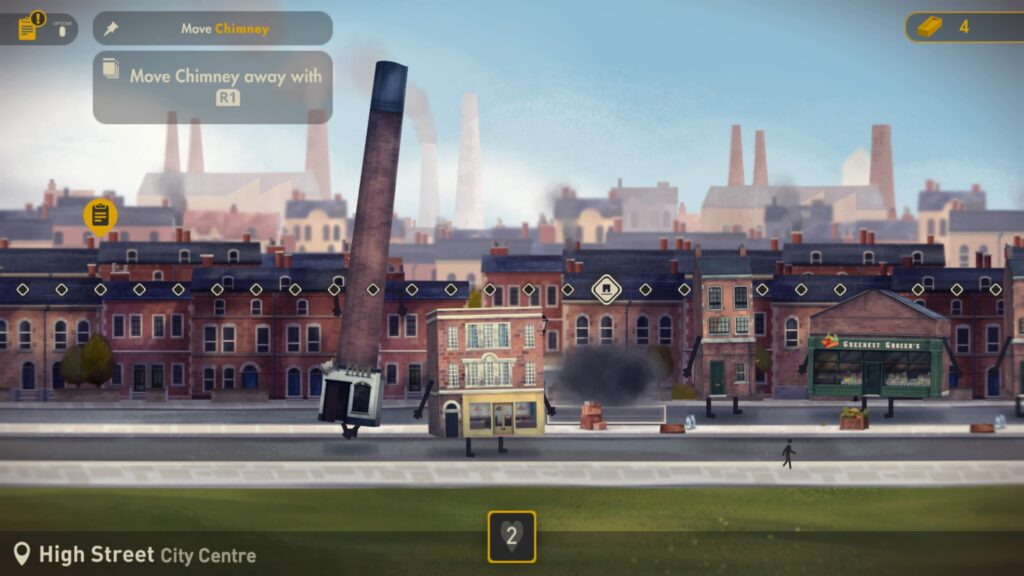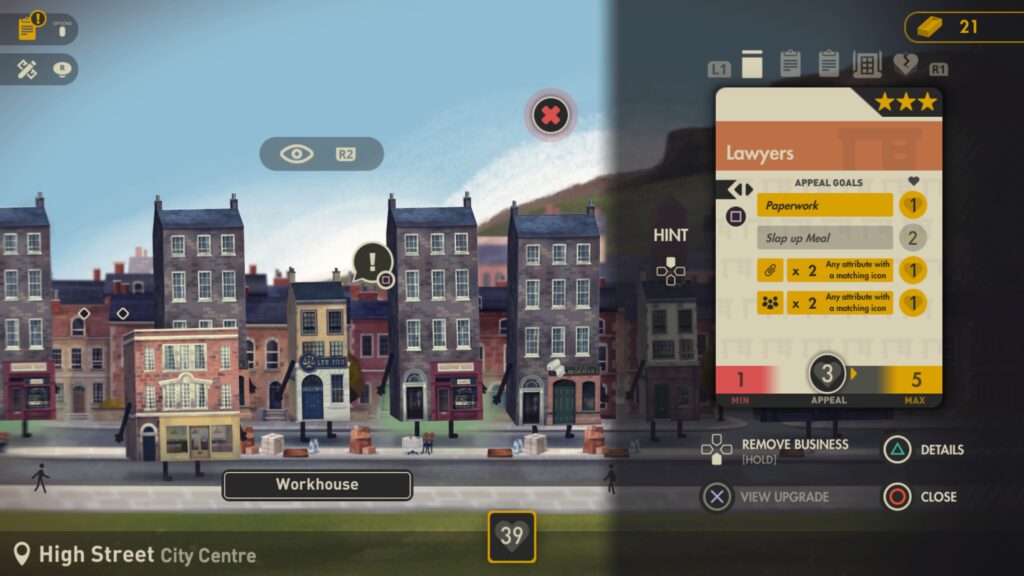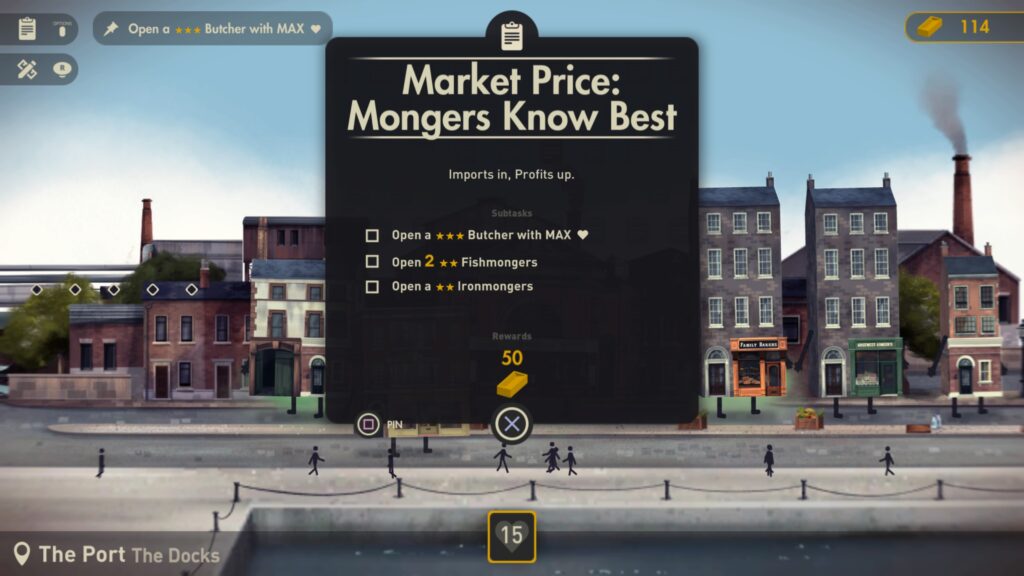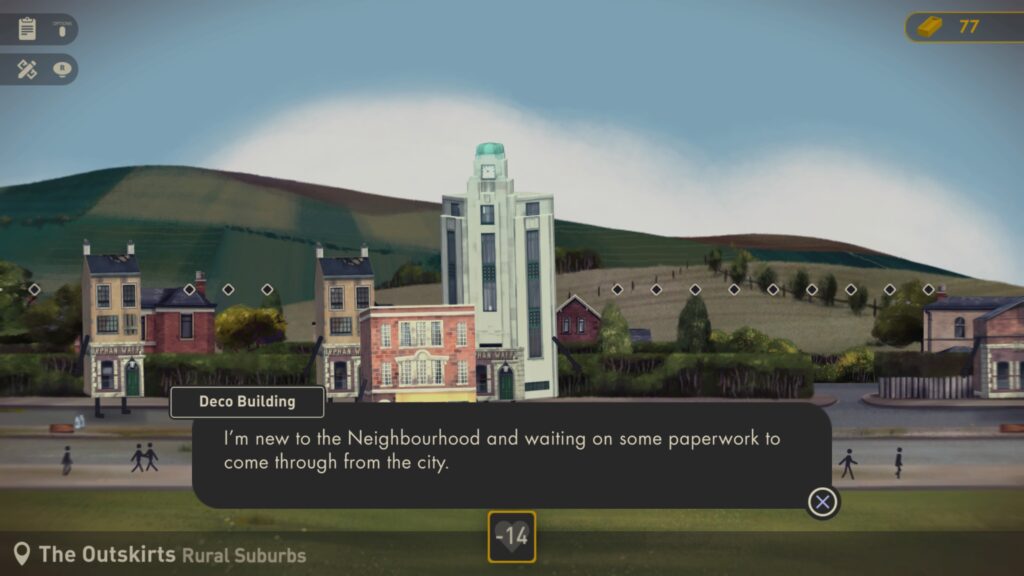
Developer: Blackstaff Games
Publisher: Merge Games, Maple Whispering
Platform: PC, PS4, PS5, Switch, Xbox One, Xbox Series X/S
Tested on: PS5
Buildings Have Feelings Too! – Review
While the game was slated for release back in 2019, we reckon a global pandemic messed up the initial release schedule of Buildings Have Feelings Too! The game has finally arrived at our doorstep, to open a new world of micro-managing and puzzling, by literally making the city around you happy. The game lets you organize a group of walking and talking buildings, hopefully coming together forming a hustling and bustling city. While the game’s initial shtick might grow old rather quickly for some players, we did very much enjoy our time with the game.
Story
The game starts off in the early 1900s, where Victorian architecture still reigned supreme, but even so, the ‘modern’ world was working on its uprising. The world slowly started becoming more than just a spot to build factories, houses and small bits of entertainment to keep the masses happy. Some buildings started to decay, and lose their purpose. This brings us to the story of the game, as buildings have feelings too. It’s up to you, another walking-and-talking building, to repurpose buildings, giving them a new lease on life. You’ll go from one area to the next, only to create blooming parts of the city, slowly modernizing itself step by step.
Overall, the narrative value of the game is quite slim, but the concept is perfectly executed, and the buildings truly have a proper personality. Each part of the city will always situate itself around one (or several) key building(s). You will have to listen to the needs of a few, to make sure the metropolis-to-be is happy.
Graphics
Graphically Buildings Have Feelings Too! has a very fun and distinct art style. The game situates itself in the early 1900s, where it starts to modernize itself as you go. You start off with some antique-looking buildings, soon evolving into a living and breathing (literally) city that is adding pubs, offices and tall buildings to the equation. The old-school style of how everything is drawn and rendered is quite nicely handled and does give a personal touch to the design. Of course, a lot of buildings will eventually end up looking the same, but that does help for the gameplay portion, as you can more easily identify the building(s) you’re looking for.
Sound
As charming as the overall graphics may be, the sound design is a bit more simplistic. You’ll have a somewhat catchy soundtrack that fits the setting of the game, combined with mostly practical and okay-sounding effects. Other than that, the game has nothing special to offer in this department. The buildings themselves have no real voice acting, but they do make some gibberish sounds that give them a certain personality.
Gameplay
Buildings Have Feelings Too! is a combination of city management with puzzle mechanics in a 2D rendered world. It’s your goal to build a successful city, with different buildings that require different items to be upgraded, thus raising the quality of your city. The catch? The buildings are alive. The latter makes things complex, but also adds a certain flexibility that other city-management games do not have. When needed, you can move the buildings around, creating new tiny little hubs to upgrade the buildings inside these hubs. It’s both easy and complex, as, for example, apartment buildings need grocery stores around to be happy, but factories also need people around to function, making those in the apartments slightly less happy. Then it’s again a matter of providing entertainment, etc. It’s often finding a balance to making everyone somewhat happy, ironing out the kinks later on. Keep in mind, as stated before, this is all done in a 2D perspective, as if you’re playing a classic platformer game, albeit with city-management mechanics.
The gameplay itself is actually quite straightforward. You earn bricks by completing objectives, allowing you to build more buildings in a specific zone or to unlock new zones. The buildings themselves can be upgraded if they’re happy enough, and then you’ll earn new bricks. Upgrading buildings to their max level will also unlock new buildings, further complicating the gameplay, till you eventually have to brew a fairly extensive ecosystem of buildings. The game is divided into different scenarios, ranging from suburbs and docks to more city-like landscapes. The menus are fairly clear, but sometimes it takes a while to actually find what you’re looking for.
We enjoyed playing the game on our PlayStation 5, but for some actions that require precision, we expect the PC version to play a lot smoother. The navigation is sometimes a bit awkward, and actually placing a building on the right spot proves to be very annoying on a console at times. This is especially true when you need to squeeze in a building on an already populated piece of land. We did notice that utilizing the D-Pad will already prevent a lot of frustration. On top of that, our prerelease build had a few game-breaking bugs, where the game would completely crash each time we would try and repurpose a specific building, wanted to go to the next area or even that new objectives would not trigger until we closed the game and reloaded our save file.
Conclusion
Buildings Have Feelings Too! is one of the most original ideas in the gaming industry we have seen in years. While not always perfect, we did very much enjoy puzzling our makeshift towns together, as well as micro-manage the buildings, hoping to make them happy. It’s quite odd that you get attached to the building in your town and actually start treating them as whimsical NPCs with their own quirks and behavioral patterns. If a developer can achieve this feeling for a city-builder game, you may call us impressed. We do suggest properly looking into this one, as it falls under a somewhat niche genre. Nonetheless, this is a great piece of entertainment.
Buildings Have Feelings Too! - Review,









No Comments